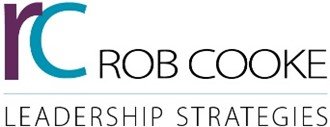
You Need to Get Meetings Under Control in a Hybrid Workplace
While meetings are essential they are often considered to be a necessary evil. The complexity of the work environment and the need for integration and alignment of multiple functions means that there is a need to collaborate and ‘meet’ with others on a regular basis. That said, several recent studies have highlighted that there has been a dramatic increase in the amount of team people are attending meetings. Unfortunately, meetings are generally poorly managed, with a great deal of unproductive time and are contributing to people’s resistance to returning to the office.
If you are having people returning to the office on a full or part time basis, this is a great time to push the reset button on your meeting culture and enhance the value of time spent at the office. The following are some suggestions I have for creating a more effective meeting culture.
Meeting Culture
Establish designated ‘meeting free times’ during the week.
Don’t start meeting before 10:00 am to allow staff to get some real work done while they are fresh and aren’t burned out from sitting through meetings.
Cap the total hours per week an individual can spend in meetings.
Reduce scheduled meeting times by 50%
Hold stand-up meetings.
Only invite people who need to be there.
Meeting Preparation and Planning
If you are the meeting leader it is up to you to carry out these actions, if you are invited to a meeting ask about these items. If they are not in place suggest the meeting be postponed or consider not attending.
Ensure clarity of agenda including meeting purpose and desired outcomes for meeting and each agenda item.
Provide agenda and materials related to agenda items at least 24 hours before the meeting. If agendas, pre-reading materials and content are NOT distributed at least 24 hours before meetings, don’t attend or cancel the meeting
Take the time to review the materials to be ready for the discussion. Ask others if they have read the materials. If not, consider rescheduling the meeting.
Ensure clarity of purpose of each agenda item:
A. To share information on key issues, events, project status, etc.
B. To request input and advice related to individual areas of responsibility
C. To make decisions related to identified areas for joint decision making
Ensure clarity on your specific role at the meeting and what you are expected to bring regarding the agenda items. Consider alternative to providing input outside of meetings.
Don’t attend the parts of meetings that are for information sharing only if the information being shared is not of interest or relevance to you.
During the Meeting
Start meetings on time and keep them as short as possible. If possible, start meetings at 15 minutes after the hour to allow people to arrive on time from previous meetings.
During meetings, don’t rely on the meeting chair to control the meeting; step in when the agenda isn’t being followed, people are going off track, or discussions are not productive. Step in and provide these observations.
Concentrate and listen to others, spend more time asking questions than ‘making a point’.
Electronic devices have no place at a meeting.
Ensure presentations are well prepared, no winging it or rambling. Limit time allowed. Ensure guests are briefed on expectations.
Limit PowerPoint presentations: ensure discipline re maximum lines per slide, maximum words per sentence, maximum of five slides.
Ensure closure on all agenda items: What is the action? By when? Who is accountable?
Allocate time for a meeting summary debrief before meeting is over: what are the outcomes, actions, responsibilities, what will be communicated about meeting outcomes and to whom.
January, 2023| Leadership Development
